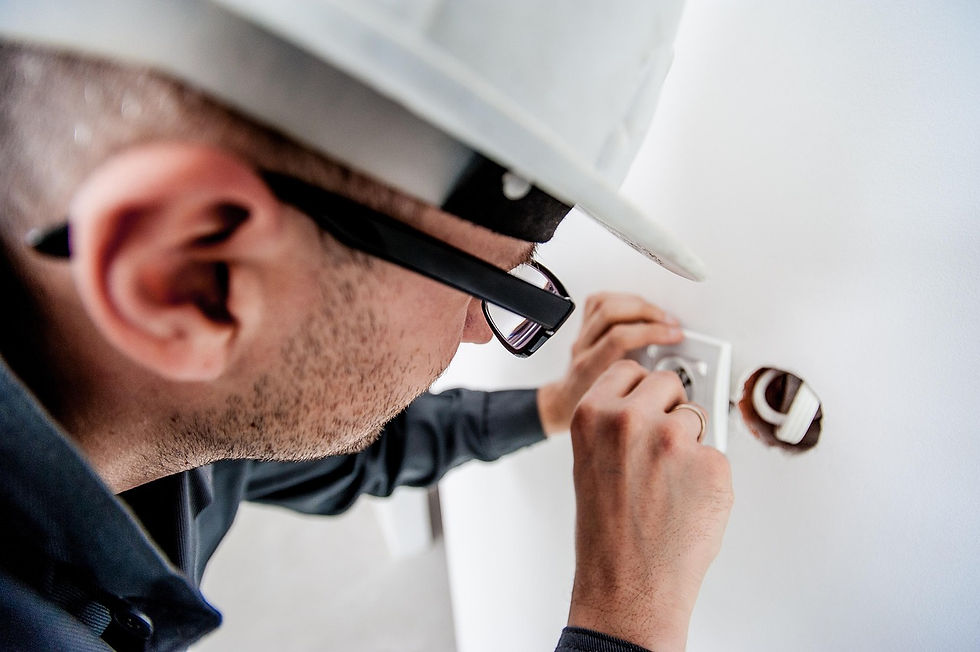Why Is It Important to Install a Switchgear in Your Electrical Installation?
- Grupo Edmar

- Aug 20
- 3 min read
Updated: Aug 22
August 20, 2025 - Importance of a Switchgear.
Why is it important to install a switchgear in your electrical installation?
In any electrical installation, whether industrial, commercial, or even high-consumption residential, safety and controllability are essential. An switchgear is one of those devices that, although seemingly simple, performs a vital function: isolating a portion of the circuit so that work can be done safely and ensuring the continuity of the rest of the system.
Installing it is not only a safety measure, but also an investment in efficiency, durability, and regulatory compliance.
Safety in Case of Maintenance.
A disconnect switch allows you to cut off the power supply to a specific area of the facility, ensuring that personnel can work without risk of electrocution. This is essential when performing work such as rewiring, inspecting transformers , or replacing switches.
Example: Imagine a production plant with several machine lines. If one of them fails, the disconnector isolates only that section, while the rest continue to operate normally. Without this device, the entire plant would have to be shut down, causing considerable losses.
It also prevents backflow of current from other sources, which can be fatal if left unchecked.

Protection against overloads and faults.
Although the switchgear does not interrupt load currents as a power switch would, it is essential for isolating areas affected by short circuits or overloads .
In a complex electrical network, a single fault can cause cascading damage. The switchgear acts as an "emergency exit" to isolate the problem and prevent it from spreading.
Example: In a substation, an open disconnect switch can isolate a damaged transformer while maintaining power from other equipment. This minimizes the impact and prevents the problem from escalating into a widespread blackout.
Ease of Operation in Complex Installations.
In industrial networks or electrical substations, the ability to decide which part of the system remains energized and which is isolated is essential for operational control.
With a switchgear, you can:
Disconnect equipment for maintenance without interrupting the entire system.
Redirect power flow to alternative circuits.
Perform safety maneuvers quickly and reliably.
This translates into less downtime and increased productivity. Even in smaller systems, such as shopping centers, it allows maintenance to be performed without interrupting supply to all stores.
Longer Equipment Life.
When electrical equipment operates under unsafe conditions—for example, with overloads or short circuits—its lifespan is drastically reduced. The switchgear helps prevent this by protecting motors, transformers, and distribution boards.
For example, if a line develops an insulation fault, the disconnect switch can isolate it before the main transformer is overstressed. This prolongs its lifespan and saves thousands or millions of pesos in repairs or replacements.
Compliance with Electrical Regulations.
National and international electrical standards specify that disconnecting devices must be installed at certain points in the installation.
Failure to comply with these provisions can result in sanctions, fines, or even temporary closure of the facility. Furthermore, having a properly sectioned system facilitates inspections and certifications, which is key if you work in sectors such as the food, mining, or manufacturing industries, where safety is a priority.

Risks of Not Installing a Switchgear.
Not having a switchgear can put the safety of personnel, the integrity of the equipment and the stability of the entire installation at risk.
Common risks:
Accidents due to handling energized circuits.
Irreversible damage to transformers and motors.
Longer downtime in case of failures.
Inability to comply with current regulations.
Example: A company without switchgear had to shut down its entire operation during a minor outage, losing production for two days. If it had had switchgear, the problem would have been resolved in less than an hour.
How to Choose the Right Switchgear for Your Installation?
The choice depends on several factors:
Nominal voltage of the installation (low, medium or high voltage).
Location (indoor or outdoor).
Environmental conditions (humidity, dust, salinity).
Frequency of operation (if it is to be operated many times a year, it requires greater durability).
Compatibility with existing system (to avoid costly modifications).
At Grupo Edmar, we can offer you a switchgear option that meets your defined specifications, guaranteeing quality, affordable prices, and competitive delivery times.





Comments